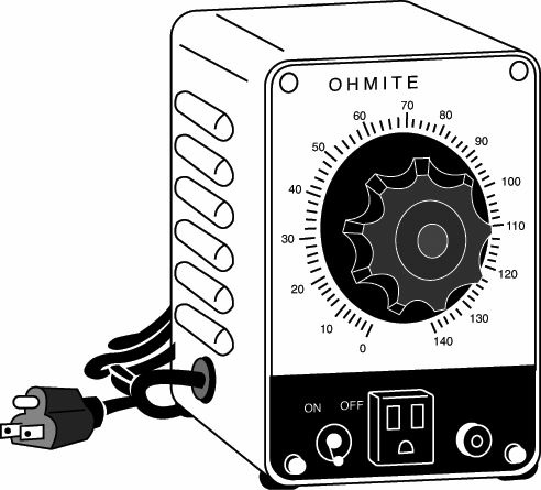Hardware Reference
In-Depth Information
line cord from the transformer into the wall socket and plug the PC power cord into the socket
provided on the transformer. The knob on the transformer can be used to adjust the AC line voltage
the PC receives.
Figure 18.41. A variable voltage transformer.
Most variable transformers can adjust their AC outputs from 0V to 140V no matter what the AC input
(wall socket) voltage is. Some can cover a range from 0V to 280V as well. You can use the
transformer to simulate brownout conditions, enabling you to observe the PC's response. Thus, you
can check a power supply for proper Power_Good signal operation, among other things.
By running the PC and dropping the voltage until the PC shuts down, you can see how much reserve is
in the power supply for handling a brownout or other voltage fluctuations. If your transformer can
output voltages in the 200V range, you can test the capability of the power supply to run on foreign
voltage levels. A properly functioning supply should operate between 90V and 135V but should shut
down cleanly if the voltage is outside that range.
One indication of a problem is seeing parity check-type error messages when you drop the voltage to
80V. This indicates that the Power_Good signal is not being withdrawn before the power supply
output to the PC fails. The PC should simply stop operating as the Power_Good signal is withdrawn,
causing the system to enter a continuous reset loop.
Variable voltage transformers are sold by a number of electronic parts supply houses, such as
Newark and Digi-Key.
Power Supply Recommendations
When you are shopping for a new power supply, take several factors into account. First, consider the
power supply's shape, or form factor. Power supply form factors can differ in their physical sizes,

